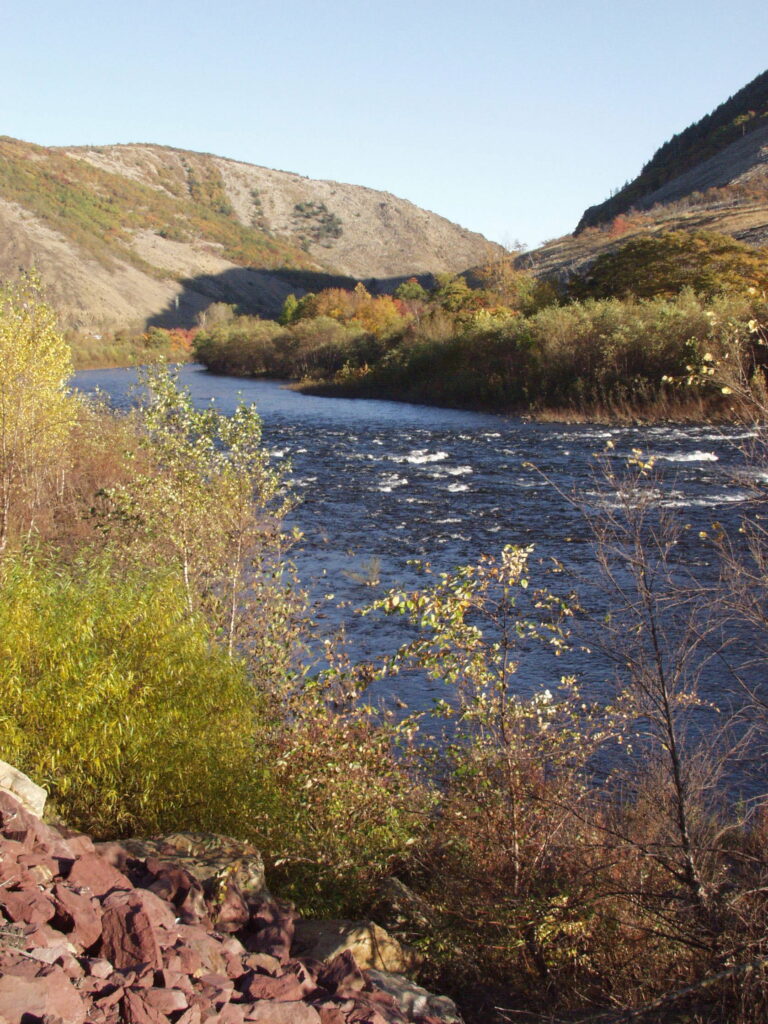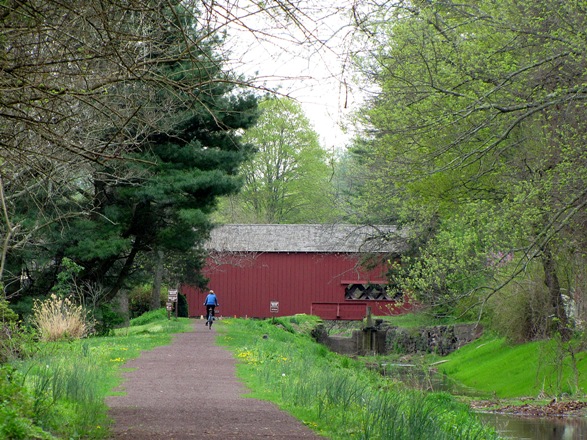Working with Nature

A region and its landscapes transformed
Over thousands of years, the Lehigh River carved through the ridges of the Appalachian Mountains, creating future industrial transportation routes. Footpaths along the river banks gave way to canals, then to railroads, and finally to modern-day highways.
Regeneration

Nowhere is this more noticeable than at Lehigh Gap, a dramatic landscape where the Lehigh River breaks through Blue Mountain, and the D&L Trail meets the Appalachian Trail. This once-barren area lost its vegetation to industrial pollutants from a nearby zinc smelter that closed decades ago.
The terrain is gradually coming back to life thanks to restoration efforts, which required hand-seeding the rocky slopes. Volunteer D&L Trail Tenders worked with regional agencies and companies to form an effective partnership, which has been successful in re-vegetating the Lehigh Gap. The landscape is becoming thick with native warm-season grasses and forests, thanks partly to these environmental efforts. The 800-acre Lehigh Gap Wildlife Refuge is now home to hiking and wildlife observation trails, and of course, beautiful vistas.
Today, throughout the Corridor, special environmental areas protect endangered species and unique geological features, as well as restore key habitats.
Farmland to Suburbia & Environmental Stewardship

The Delaware Canal, built in the early 1800s, is completely encompassed by the Delaware Valley. At that point, the Delaware Valley was home to thriving Quaker farms and small commercial settlements. Further south on the Corridor, from Easton to the canal’s end at Bristol, the landscape bustled with new industries during the 19th century.
Entrepreneurs and capitalists found rich and varied natural resources in the mountains and valleys of the Corridor. They extracted lumber, coal, slate, limestone, iron ore, and zinc with little regard for environmental damage caused by mining and processing techniques.
As the landscape transitioned from farmland to industry, citizens developed an ethic of stewardship that still exists today. The Corridor’s region witnesses some of the strongest land conservation efforts, historic preservation initiatives, and cultural heritage programs in the state.










